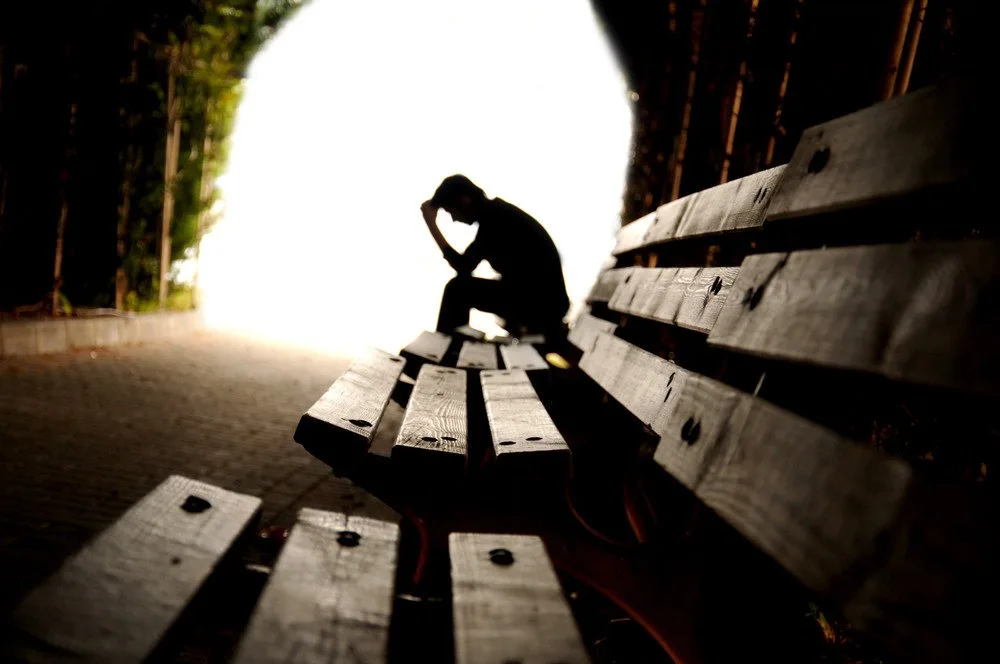Cited as the biggest killer of men under the age of 45 (with more deaths than car accidents), death by suicide has been shown to be responsible for 800, 000 annual deaths. The Centers for Disease Control and Prevention (CDC) shares that whiles males make up 49% of the population, they account for over 76% of suicides in the United States every year. Research shows that although women are more likely to experience suicidal thinking, men are far more likely to commit suicide.
Suicide Isn’t Gender-Neutral
Suicide is often thought of as a gender-neutral issue, but in reality, it’s a problem that affects men far more than women. Women are three to four times more likely to attempt suicide and twice as likely to experience major depression. However, men are more likely to die from it. Compared to women, men are three times more likely to die by suicide in Australia and Canada. Moreover, in Russia and Argentina, they are more than four times more likely. If women are more likely to attempt suicide, why are mortality rates higher in men?
Why Do Suicide Rates in Men Differ?
Undiagnosed Depression in Men
According to The National Institute of Mental Health, over 6 million men are impacted by depression. It is officially the biggest mental health issue impacting men. The presence of mental health issues is a major predictor of suicide.
According to Edward Mantler, vice president of programs and priorities at the Mental Health Commission of Canada, “Ninety percent of people who die by suicide are experiencing some sort of mental illness or addiction, most often depression.”
Symptoms of this mental disorder may range from feelings of sadness to a loss of interest in normal activities. However, these symptoms aren’t the same across the different genders.
A Difference In Depression-Related Symptoms Fostering Stigmas
John Oliffe is the founder and lead investigator of Men’s Health Research. He has conducted research showing that there is a difference in depression symptoms between men and women. The research cites how “increased anger, risk-taking, irritability, and substance abuse might be more common signs of depression in men.”
Julie Campbell, the executive director of the Canadian Association for Suicide Prevention, states that “men will talk about not being able to sleep, (or) about back pain, but they won’t say they’re feeling sad and incompetent.”
Loss of interest in work and sleep disruptions are also key signs of depression and possible suicidal ideation. Andrew Angelino, M.D., Chair of Psychiatry at Howard County General Hospital, adds that “We’ve taught boys that they don’t cry; so instead of crying, they get angry and threatening.” These stigmas surrounding emotional expression in men have translated to men not seeking support, which impacts suicide rates.
Men Are Less Likely To Seek Help And Emotional Support
According to the CDC, women are more likely to receive mental health treatment than men. Their statistics show that only 8% of American men receive counseling or therapy. Another study pointed out that in the year before committing suicide, while 58% of women saw a mental-health practitioner, only 35% of men saw one.

Cast Of Thousands/Shutterstock
Studies show that men still associate seeking assistance for psychological or emotional problems with weakness. For centuries, gender and societal roles have discouraged emotional expression in men. This has led to a reluctance to ask for help and unhealthy methods of coping.
“Numbing” The Pain
Paul McGregor, an author, blogger, and, mental health advocate who lost his father to suicide says “(as men) we bury this pain, the childhood trauma, and we’ll put on a brave face and surround ourselves with short-term pleasures.”
This is a trend we commonly see. Especially if men keep bottling up their emotions and turning to unhealthy mechanisms, which ultimately worsen their condition. Such as alcohol (a depressant that affects serotonin and dopamine levels), drugs, and even risky sexual behavior.
Men have been associated with excessive alcohol use for many years. The CDC even reported that from the 68% of the male population that consumes alcohol (compared to 64% of women), 21% of them report binge drinking, compared to 13% of women. These unhealthy coping mechanisms can exacerbate existing depression and depressive symptoms, thus increasing your risk of suicide.
Spotting the Signs of Suicidal Ideation
While some signs of suicidal ideation are quite obvious, such as talking about dying, and self-harming, there are a few symptoms that may indicate the possibility of suicidal ideation:
- A Change In Sleep Patterns: Whether it be sleeping too much due to a low mood and energy, to sleeping too little due to anxious worrying and running thoughts. A sudden change in sleeping patterns can be indicative of underlying mental health issues, putting someone at risk of suicidal ideation.
- Creating Emotional Distance: Someone who is suicidal may become detached from various aspects of life. Including people and activities. Detaching oneself emotionally comes in various forms, including behaving indifferently in the face of an emotional situation, or isolating oneself from others.
- Losing Interest in Personal Appearance or Hygiene: Daniel J. Reidenberg, PsyD, FAPA, executive director of SAVE (Suicide Awareness Voices of Education) states that a person considering suicide is “doing all that they can just to get through the day. Their appearance isn’t a priority.” Psychologist Eileen Kennedy-Moore, Ph.D., adds that “they’re too miserable and too depleted to care about how they look.”
- Excessive Mood Swings: It is common for depressed individuals to go from extreme sadness to irritability, to intense anger (which is most common in men). Kevin Gilliland, Ph.D., a licensed psychologist, says that mood swings can be a sign of “emotional and psychological instability”, which can ultimately lead to risky, impulsive behaviors, including a suicide attempt.
So What Is The Answer?
Male suicide is prevalent, and this silent killer is a growing problem in the U.S.
“The big picture answer to this problem is addressing the issue of masculinity in our culture,” says Oliffe, sharing how the need for men to be “the sturdy oak” must be diminished, especially in younger generations.
Campbell further adds that “We always say that men should be able to cry more, but it’s any man but our man.”
The work needs to start within households and friendship circles, where we create a non-judgmental environment that fosters vulnerability and support.
According to research, a few people who have experienced suicidal ideation, but didn’t act on it, cite the support of friends and family as a motivating factor. Having a network of trusted people who can offer support is very important, and not just for men.
MAIN IMAGE CREDIT: Ivan Popovych/Shutterstock
References
- Cai, Z., Chang, Q., Yip, P.S., Conner, A., Azrael, D. and Miller, M., 2021. The contribution of method choice to gender disparity in suicide mortality: A population-based study in Hong Kong and the United States of America. Journal of affective disorders, 294, pp.17-23.
- Rostami, M., Jalilian, A., Rezaeian, S. and Kamali, A., 2019. Gender and spatial disparities of suicide mortality risk in Kermanshah Province, Iran: a brief report. Dr. Sulaiman Al Habib Med J, 1(3), p.4.



![women [longevity live]](https://longevitylive.com/wp-content/uploads/2020/01/photo-of-women-walking-down-the-street-1116984-100x100.jpg)










